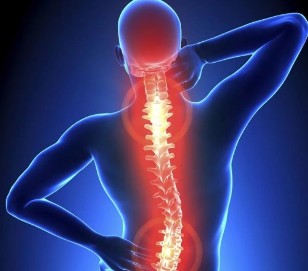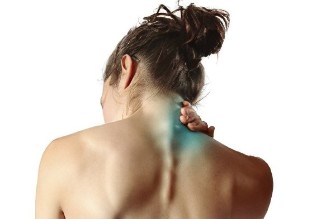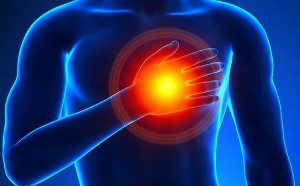Osteochondrosis of the cervical spine — it is a progressive disease, which represents a degenerative-degenerative changes in the intervertebral discs, accompanied by their deformation and change of structure.

The causes of the disease. The main reason - a violation of metabolic processes in the body, and as a result, deterioration of blood supply to the intervertebral disc. Less frequently the disease occurs as a result of injury to the cervical spine. Contribute to the emergence of degenerative disc disease: sedentary lifestyle, bad posture, long "sitting" behind a desk, in front of a computer, and so sp
Osteochondrosis of the cervical, treatment at the clinic
Treatment of cervical degenerative disc disease at the clinic is carried out by the methods of eastern medicine. In the course of treatment methods are used tibetan medicine – point of massage and herbal medicine, methods of chinese medicine – it is, first and foremost, acupuncture and cautery from. The possible use of a soft manual therapy, osteopathy (in hr. so "cranio-sacred techniques", which represent the is a method of soft impact on the bones and soft patterns of the skull; the goal of the method - restore the proper blood circulation of the cerebrospinal fluid) and other available methods of doctors of the clinic.

Treatment of cervical degenerative disc disease the spine – one of the basic directions of activity of the clinic. On the basis of the on a large experience in this direction, we can assert that the results of the the treatment of this disease (including complicated protrusions and hiatal the spine), are quite satisfactory. Treatment of cervical degenerative disc disease is designed individually for each patient and carried out comprehensively (in the process of digestion sessions are usually attended by several methods of treatment, the duration of the – 1-1,5 hours). Pain in the cervical region, usually, is made up of 70% already after 2-3 therapeutic sessions. The course of treatment of degenerative disc disease in the average ranges from 5 to 11 sessions. In the course of treatment is carried out affects the pathological changes in the body, which led to the emergence of the disease.
Features of degenerative disc disease of the cervical spine
Cervical osteochondrosis, compared with thoracic and lumbar osteochondrosis, has a number of features. These features are mainly designed way, features of the structure of the vertebrae of the neck, the dimensions of the bone structures that is the much smaller size of the vertebrae of the other divisions. Throat - the most a movable spine, holding the head, that is constantly loaded. Osteochondrosis most commonly affects the the movable segments (the roots of the S-5 - S-7) - this determines, in the final account, symptoms of degenerative disc disease of the cervical.
In the area of the neck is a relatively small range aimed many vascular and nerve formations in the so am is held here the vertebral artery, which supplies blood to the back of the brain - the medulla oblongata and the cerebellum. During compression of the vertebral artery due to a reduction in blood circulation due to stenosis, perhaps, that the development of ischemia of the brain and the spinal cord, and in a tight case, it can lead to a spinal stroke. Symptoms of lesions of the vertebral artery - dizziness, impaired coordination movements, impaired hearing and vision.
Due to the compactness of the cervical small the offset of the vertebrae or muscular tension can cause squeezing of the nerve endings (pinched nerve in the cervical region) or vascular structure. Created over time osteophytes in terms of the portability of the cervical worsen situation.

Cervical osteochondrosis leads to the formation of the extrusion and hernia the spine, which are (in addition to the above reasons, muscle tension, the displacement of the cervical vertebrae, the education of osteophytes), comprimarea nervous spine, cause its swelling and inflammation. Finally, due to the small size of the vertebrae the channel of the neck, the spine takes the whole of his volume, in addition compremised (compression arises in the spinal canal). The clinical signs of the status - a significant painful.
Osteochondrosis can cause compression of the spinal cord, and because of the narrowness of the stenosis of the carotid of the spine that occurs more frequently than in the thoracic and lumbar parts. In this into the zone of destruction, they get not only the neck and head, but so the top (which is celebrated more often) and lower extremities. Thanks to its characteristics is a cervical osteochondrosis more often (in comparison with the lumbar and thoracic), which leads the patient to disability.
To sum up, here are the factors that determine the compression of various diseases and neural structures in the cervical osteochondrosis
- The Offset (slip) of vertebral disc - spondilolistezom. The most commonly - distortion is the minimum, because even a small shift the vertebrae in the cervical region causes a paralysis, but more often it is the cause of the deadly result.
- Protrusion and hernia the spine - as a result of the development of degenerative disc disease of the cervical the spine and direction in the inside of the spinal canal.
- Osteophytes. As a result of cervical degenerative disc disease on the sides the bodies of the vertebrae and the joints are formed by the bony growths - osteophytes. Osteophytes, located on the sides of the bodies of the vertebrae, irritating the adjacent to them muscles, muscle which rises. While this increases the burden on the vertebrae, which leads to an increase in pressure on the intervertebral disc, its height when it is reduced, increases the risk of extrusion of the intervertebral disc. Osteophytes, which focus on the side of the channel, where it is held the vertebral artery, can cause its stenosis.
- The reduction of height of the vertebral disc (the flattening of the intervertebral disc)is often the cause of compression of the nerve roots by reducing the the intervertebral foramen. In addition, in this case, in the case of the failed corner the neck is a possible subluxation of the cervical vertebrae, which leads to further compression.

Cervical osteochondrosis symptoms
Symptoms of cervical degenerative disc disease of the spine are primarily dependent from it, that became the target of destruction. We distinguish: root syndromes (compression of spinal roots), compression the spinal cord, ischemia of the spinal cord due to stenosis of the vertebral artery, thereby is disturbed blood supply to the brain stem, cerebellum, cranial the nerves and the inner ear. Below are listed the most commonly occurring syndromes.
- Root syndromes - cervical radiculitis. Arise when comprimarea roots (pinched nerve in the cervical region). These symptoms of cervical degenerative disc disease are associated with compression (compressed) nerve roots. The pain radiates from the neck down to the scapula and further to the shoulder, of the forearm (on the outer surface) on the fingers hands. One can observe a pasty, "run a fever", so the forearm, hand and fingers. In addition, depending on what segment of the overwhelmed, the symptoms of degenerative disc disease of the cervical will vary. For example, when the loss of the roots of the central nervous paste will be great, index and the middle finger, and when damage to the roots of the shoulder of the nerve - ring finger and little finger (the other symptoms are identical).
- Irritative-reflex syndromes. Symptoms: "burning pain" in the neck-occipital area or in the area of the neck (after sleep, when turning the head, sneezing, etc.). It is possible the irradiation on the shoulders and the rib cage.
- Syndrome vertebral artery in the cervical osteochondrosis. Symptoms: throbbing, either "hot" the pain of the head, exciting the back of the head, the temple, the darkness and the area above the eyebrows. The pain is often constant, less frequently paroxysmal, reinforced after a long search in an uncomfortable position while driving. For general weakness of the body are possible nausea, loss of consciousness. Can occur unilateral auditory disturbances: noise, decrease in visual, vestibular disorder. In patients suffering from CHD, it is possible to increase the HELL, pressing pain in the heart area. Maybe visual acuity reduced, eye pain, etc.
- Cardiac syndrome. Symptoms of degenerative disc disease in this syndrome similar to the symptoms of true angina pectoris. It is believed that muscle contraction in the region of the heart are caused by compression spinal nerve roots to the lower segments of the cervical spine and are her reflective sensitive. Heart syndrome occurs when irritation of the roots of the big pectoral muscle or the roots of the phrenic nerve, because of its fibers go to the pericardium. Clinical symptoms: pressing pain in the heart area. Pain may be paroxysmal and continue up to several hours. Reinforced when a sharp turn of the head, coughing, sneezing. It is possible to, tachycardia, arrhythmia. Coronarosclerosis means the pain is not down. Cardiogram, which during the a heart attack may not reveal signs of disorders of the coronary circulation.

































